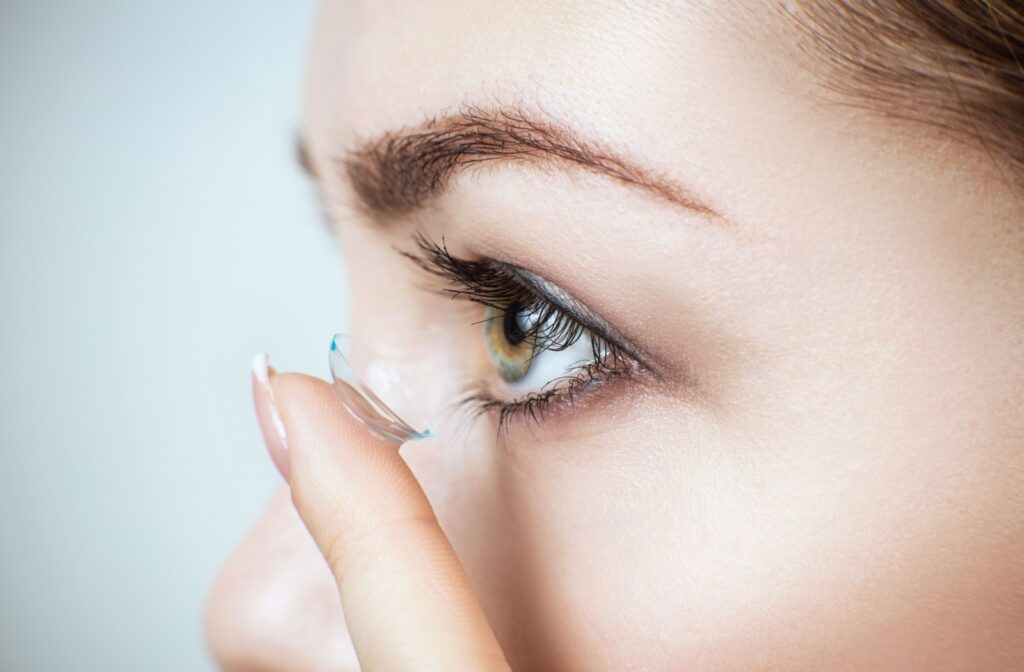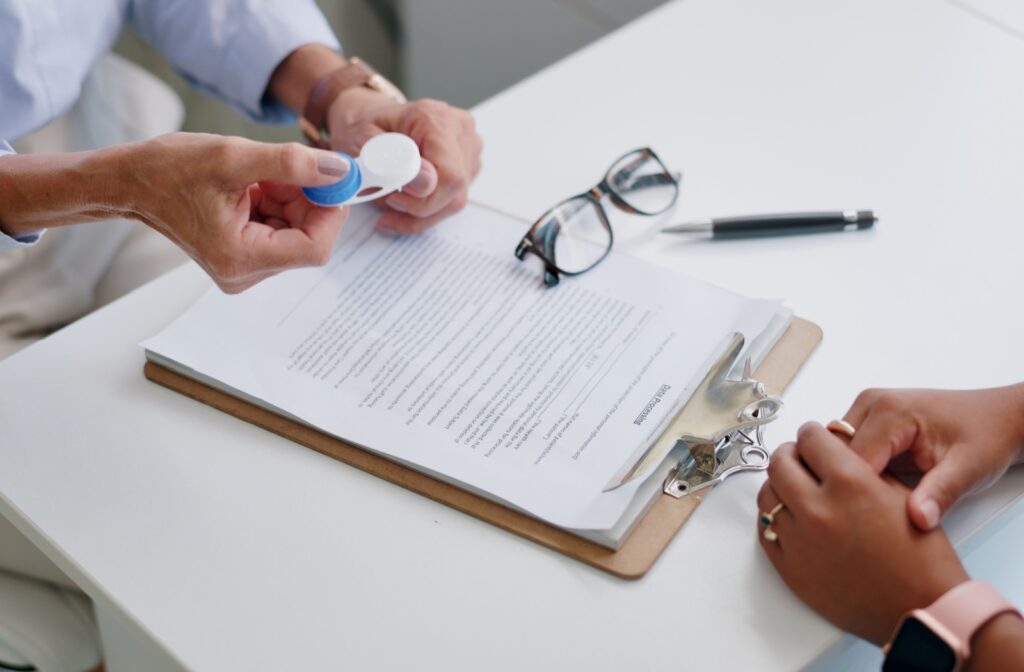Contact lenses can transform how you see the world, offering freedom, convenience, and clarity that enhance your daily life. But before jumping into wearing them, there’s one critical step you shouldn’t skip—a professional fitting.
A proper contact lens fitting is essential for comfort, clear vision, and maintaining your eye health.
While it may seem tempting to grab a pair of lenses off the shelf, fitting them correctly requires a tailored process to ensure they not only feel natural but also keep your eyes safe.
Why a Good Contact Lens Fit Matters
The perfect contact lens fit means your lenses align with the unique shape of your eyes. When they fit well, you should experience lasting comfort, sharper vision, and better eye health. Without a proper fit, lenses can cause discomfort, blurry vision, or even complications like infections or corneal damage.
A well-fitted lens should rest securely over the cornea, but it should also move slightly with each blink, allowing proper tear circulation and oxygen transmission. When fitted properly, wearing lenses becomes second nature, letting you focus on work, workouts, or enjoying a night out without irritation or distraction.
How Optometrists Measure Your Eyes
Your eyes are as unique as your fingerprints, which is why one size doesn’t fit all when it comes to contact lenses. Optometrists rely on precise measurements to fit your lenses, like the base curve and diameter of your eye.
The base curve refers to the curvature of the lens, designed to match the natural curve of your eye. Eyes with a steep curvature need lenses with a smaller base curve, while flatter eyes require lenses with a larger curve. The diameter, on the other hand, ensures the lens covers your cornea without interfering with your eyelids.
Finding the right lens size isn’t a guessing game. Your optometrist provides trial lenses during the fitting process to fine-tune the fit and feel based on your needs.
Signs Your Contacts Fit Properly
Whether you’re new to contact lenses or upgrading, it’s important to recognize the signs of a proper fit. Look out for:
- Comfort: Your lenses should feel like they’re not even there. If you notice irritation, burning, or a gritty sensation, something may be off.
- Stable vision: Well-fitted lenses provide clear and steady vision. If your lenses shift too much or cause blurry vision, they might need adjustment.
- Healthy eyes: Redness, itchiness, and excessive watering are warning signs that your lenses may not be suitable for your eyes. A proper fit keeps these discomforts at bay.
If any of these issues occur, don’t hesitate to follow up with your optometrist to reevaluate your lenses and make the necessary adjustments.

What to Expect During a Professional Fitting
Getting fitted for contact lenses isn’t just swinging by your eye care clinic with a tape measure. It’s a thorough process designed to prioritize both comfort and eye health while addressing your lifestyle needs.
Your optometrist starts by understanding your needs: Do you want lenses for daily activities or special occasions? Do you prefer disposable or long-term lenses? This initial consultation sets the foundation for selecting the ideal lenses for you.
Next, your optometrist performs an eye exam to measure the key dimensions of your eyes. These include the curvature of your cornea, the size of your pupil and iris, and an evaluation of your tear quality. Tear film measurements are especially important to determine if your eyes can support lens wear comfortably.
Once we finish the measurements, the best part begins. Your optometrist will provide trial lenses for you to test. This helps everyone assess how the lenses sit on your eyes, how they move when you blink, and how they feel after a short period of wear.
Choosing the Right Contact Lens Material
Not all lenses are suited for your needs, and the material plays a huge role in both comfort and eye health. Your optometrist will guide you in selecting the type that best suits your lifestyle and visual needs.
Some of the most common types include:
- Soft Lenses: Made of hydrogel or silicone hydrogel, these lenses are flexible and extremely comfortable. Silicone hydrogel allows more oxygen to pass through to the cornea, making it ideal for long wear.
- Rigid Gas Permeable (RGP) Lenses: Firmer and more durable, these lenses deliver crisp vision and are often recommended for people with specific vision needs such as astigmatism.
- Hybrid Lenses: Combining the best of both worlds, hybrid lenses have a rigid center for sharp vision and a soft outer ring for added comfort.
A fitting is the perfect time to talk to your optometrist about which option aligns best with your needs.
Daily Wear vs Extended Wear Lenses
Another key decision during your fitting process is choosing a lens wear schedule. Each option offers distinct benefits depending on your preferences.
- Daily wear lenses: Perfect for beginners, daily disposables are convenient and low-maintenance. Pop in a fresh pair every morning, and toss them in the evening.
- Extended wear lenses: These are built for the go-getter lifestyle, with materials that allow for continuous overnight wear for up to 30 days. Ideally, you shouldn’t sleep while wearing contacts, plus proper cleaning and adherence to your replacement schedule are crucial to avoid complications.
Your optometrist will discuss which schedule aligns with your lifestyle, so you can fit contact lenses seamlessly into your routine.
Start Your Contact Lens Journey Today
Getting fitted for contact lenses is an investment in your vision and quality of life. With the right fit, lenses open up a whole new realm of possibilities, offering razor-sharp clarity and lasting comfort.
Total Vision Tierrasanta is here to guide you every step of the way. We work with you to find contact lenses tailored to your eyes and lifestyle. Book your contact lens fitting with us today and take the first step towards a clearer, more comfortable future.


